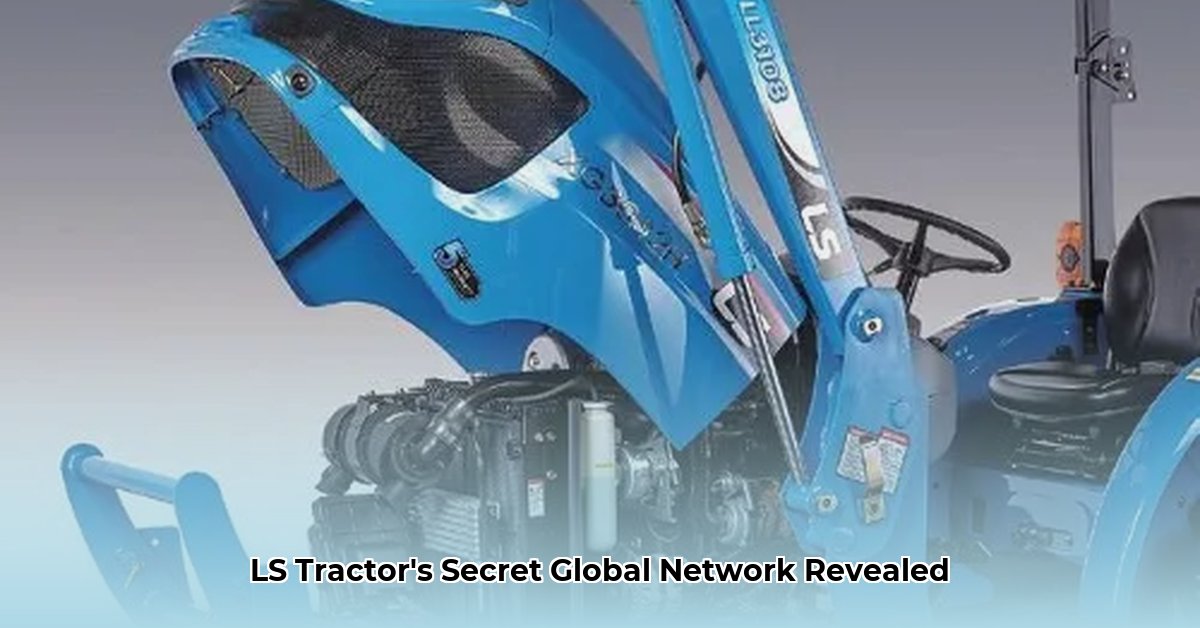
The engine powering an LS tractor represents more than just mechanics; it embodies a complex, globally interconnected supply chain. This article delves into the intricacies of LS Tractor motor sourcing, exploring the challenges and opportunities within this dynamic system. We will examine the key players, future trends, and strategies for mitigating inherent risks. To learn more about LS Tractor's manufacturing, visit LS Tractor manufacturer.
LS Tractor Motor Sourcing: A Global Network
LS Tractor employs a strategic sourcing model, partnering with various suppliers to acquire optimal components. This collaborative approach, similar to a chef carefully selecting ingredients, leverages specialized expertise and enhances efficiency. A prominent partner frequently cited is Mitsubishi, highlighting LS Tractor’s reliance on established engine manufacturers. This distributed model, while advantageous in terms of cost and specialization, introduces complexities.
“The strategic sourcing model allows us to leverage the best technology and expertise globally, resulting in superior product quality and cost efficiency,” says Dr. Lee Jae-hoon, Chief Engineer at LS Tractor.
Global Supply Chain Dynamics: Challenges and Opportunities
The global nature of the LS Tractor motor supply chain presents a double-edged sword. While it unlocks access to specialized expertise and cost savings, it also increases vulnerability to disruptions. Geopolitical instability, natural disasters, and shipping bottlenecks can significantly impact production. Key performance indicators (KPIs) – cost, quality, lead times, and risk – must be carefully managed. A delay in one part of the chain can cascade through the entire system, highlighting the need for robust risk management. “Our success hinges on predicting and mitigating potential disruptions,” states Ms. Kim Sun-hee, Head of Supply Chain Management at LS Tractor.
Stakeholder Perspectives: A Multifaceted Ecosystem
The LS Tractor motor supply chain involves multiple stakeholders, each with unique perspectives and challenges:
- LS Tractor (OEM): Sets quality standards, manages the supply chain, and bears ultimate responsibility for product performance.
- Suppliers (Tier 1 & 2): Provide crucial components, their expertise and reliability impacting the final product quality.
- Farmers (End-Users): Their reliance on efficient and reliable machinery directly impacts agricultural productivity and profitability. A malfunctioning engine translates to lost revenue and time.
- Governments (Regulatory Bodies): Shape the landscape through environmental regulations, safety standards, and trade policies, influencing costs and operational feasibility.
Effective communication and collaboration among these stakeholders are crucial for a resilient supply chain.
Future Trends: Shaping the Next Generation of Agricultural Machinery
The agricultural machinery sector is undergoing rapid transformation. Electrification, automation, and precision farming are driving significant changes impacting the LS Tractor motor supply chain. Experts predict that regionalization of production might gain traction, reducing reliance on long-distance shipping and enhancing resilience. Technological advancements will necessitate new suppliers and manufacturing techniques.
“The shift towards electrification and automation will necessitate a highly adaptable and flexible supply chain," notes Professor David Kim, Department of Agricultural Engineering, Seoul National University.
Mitigating Supply Chain Risks: A Proactive Approach
Several strategies are crucial for mitigating supply chain risks:
- Supplier Diversification: Reducing reliance on single sources minimizes vulnerability to disruptions.
- Risk Assessment: Proactive identification of potential disruptions (political instability, natural disasters) enables development of effective contingency plans.
- Technological Integration: Leveraging data analytics and blockchain technology enhances supply chain transparency and enables faster responses to disruptions. This approach allows for proactive interventions to mitigate potential issues, improving efficiency.
- Strategic Partnerships: Nurturing robust relationships with key suppliers fosters collaboration and mutual support.
- Inventory Management: Optimizing inventory levels balances cost and risk mitigation.
By implementing these strategies, LS Tractor can build a more resilient and adaptable supply chain, ensuring the continued reliable production of high-quality tractor motors. The future of agricultural innovation depends on this resilience.